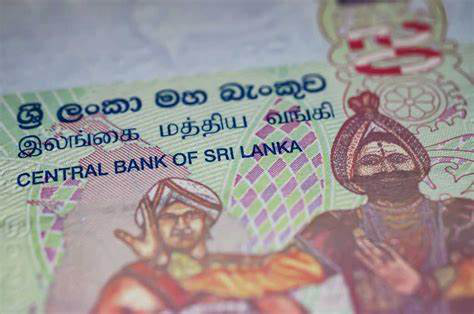On Tuesday, Sri Lanka’s central bank surprised markets by cutting interest rates by 50 basis points. It stated that more policy easing was possible as it prioritizes growth to help the country emerge from its worst financial crisis in decades.

The markets were taken aback when the Central Bank of Sri Lanka (CBSL) cut the Standing Deposit Facility Rate to 8.50% and the Standing Lending Facility Rate to 9.50%. Eleven of the sixteen economists and analysts surveyed by Reuters had predicted that rates would stay constant.
Governor P. Nandalal Weerasinghe of CBSL stated, “Going forward, if we see that inflation on a stable basis remains between 4%-5%, I see space for monetary policy to be reduced further in the current cycle.”
At a press conference following the policy announcement, Weerasinghe said that restrictive monetary conditions persist. Additionally, current estimates indicate that inflation would hover around 4% to 5% over the next 12 to 18 months.
After plunging into its worst economic crisis since gaining independence from the British in 1948, Sri Lanka started a torturous recovery. The most recent easing brought the total amount of interest rate reductions since last year to 700 basis points.
According to Thilina Panduwawala, head of research at Frontier Research, “the decision seems to be very much driven by a desire to support demand conditions and boost growth further, taking advantage of the impact of electricity tariff reduction and appreciation of currency.”
Despite a 3% increase in sales tax at the beginning of the year, which drove up prices and caused inflation to soar to 5.9% in February, the bank maintained its policy rates in January to control inflation.
“The possible upside risks to inflation in the near term would not materially change the medium-term inflation outlook, as economic activity is projected to remain below par for an extended period,” the Federal Reserve stated in its policy statement.
According to CBSL, the move to cut rates would allow the economy to grow to its full potential. Additionally, it would assist in keeping inflation at the medium-term goal level of 5%.
The central bank emphasized the need for market interest rates to remain low. Furthermore, it stated that although there has been a recent adjustment in tax policy, the impact on inflation has been less than anticipated. Demand conditions are still low.
ELECTIONS, DEBT RESTRUCTURE
Frontier’s Panduwawala states that the rate cuts support the optimism following the IMF staff agreement. However, they are not expected to affect this week’s debt restructuring negotiations.
According to Udeeshan Jonas, chief strategist at stock research company CAL Group, “rate reduction may not make a big difference on credit, given that lending is slower due to lack of confidence, tax implications, and investors taking a wait and see approach ahead of the elections.”
In the second part of 2024, the South Asian country is scheduled to host presidential elections.
In order to restructure its $12 billion in debt, Sri Lanka will begin discussions with private bondholders. The country defaulted on its debt in May 2022 due to a sharp decline in its foreign reserves, which prevented it from paying for necessities like fuel and medication.
Reaching a staff level agreement on the second review with the IMF last week gave the island nation confidence boosts and moved it one step closer to obtaining the next tranche of a $2.9 billion bailout package from the international lender.
According to Weerasinghe, the debt restructuring must be finished by the government before the subsequent IMF assessment.
The GDP of Sri Lanka contracted 2.3% in 2023 but expanded by 4.5% in the fourth quarter, paving the way for a rebound this year.
“This growth momentum is expected to continue in the upcoming quarters,” stated CBSL.
Click here for more news on Banking.

